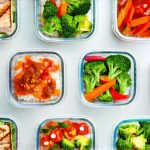Living with bladder sensitivities – whether due to Interstitial Cystic (IC) disease, Overactive Bladder (OAB), or other conditions – often necessitates significant dietary adjustments. Many find themselves navigating a complex landscape of ‘trigger’ foods and striving for meals that minimize irritation while still being enjoyable and nourishing. Simultaneously, maintaining a healthy budget is crucial for most households, creating a unique challenge: how to eat bladder-friendly without breaking the bank. This isn’t about deprivation; it’s about smart choices, creative substitutions, and understanding where you can maximize both health and savings. It’s about reclaiming control over your diet and your wellbeing, all while staying within practical financial limits.
The good news is that bladder-friendly eating doesn’t automatically equate to expensive organic produce or specialized ingredients. In fact, many naturally soothing foods are inherently affordable staples. This article will provide a comprehensive guide to meal planning on a budget for those managing bladder sensitivities, offering practical tips and strategies to navigate grocery shopping, recipe selection, and mindful eating habits. We’ll focus not just on what to eat but how to make it sustainable and enjoyable long-term, recognizing that dietary changes are most effective when integrated seamlessly into your lifestyle. Remember to always consult with a healthcare professional or registered dietitian for personalized advice tailored to your specific needs and sensitivities.
Budget-Friendly Bladder Basics
Many common bladder irritants – caffeine, alcohol, citrus fruits, tomatoes, spicy foods – can be expensive indulgences anyway. Cutting back on these doesn’t necessarily feel like a sacrifice from a financial perspective. The real challenge lies in finding satisfying replacements that don’t leave you feeling deprived or spending more money. Prioritizing whole, unprocessed foods is key; they are generally cheaper and less likely to contain hidden irritants. This means cooking at home more often, utilizing leftovers creatively, and learning to embrace simple recipes. For example, instead of a pricey store-bought salad dressing that might contain citric acid, make your own with olive oil, herbs, and a touch of apple cider vinegar (if tolerated).
Building meals around naturally bladder-soothing foods like pears, blueberries, rice, potatoes, carrots, and cucumbers can form the foundation of affordable meal plans. These foods are typically inexpensive and readily available in most grocery stores. Focusing on seasonal produce is another excellent strategy; fruits and vegetables that are in season are generally cheaper and taste better. Don’t underestimate the power of frozen vegetables either! They are often just as nutritious as fresh, last longer, and can be significantly more affordable. Batch cooking – preparing larger quantities of food at once and freezing portions for later – saves time, reduces food waste, and ensures you always have a bladder-friendly meal on hand. To further streamline your approach to dietary changes, consider exploring how to build a weekly urology meal plan.
Meal planning is paramount. It’s tempting to simply grab whatever looks good at the grocery store, but this often leads to impulse purchases and potentially irritating foods. Take an hour each week to plan your meals for the following days, create a shopping list based on your plan, and stick to it. Check what you already have in your pantry and fridge before making your list to avoid unnecessary duplication. Look at flyers and online coupons to find deals on bladder-friendly staples. Remember that planning isn’t rigid; it’s about creating structure while still allowing for flexibility.
Navigating Grocery Shopping Strategically
Grocery shopping can be overwhelming, especially when you’re trying to navigate a specific diet. One of the biggest budget savers is learning to read food labels carefully. Look beyond the front-of-package marketing and examine the ingredient list. Avoid products containing common bladder irritants like artificial sweeteners, preservatives (especially benzoates), and excessive amounts of Vitamin C. While organic options are great if your budget allows, they aren’t always necessary. Focus on purchasing organic versions of foods that are known to have higher pesticide residues (like strawberries and spinach) while opting for conventional options for others.
- Utilize store brands: Generic or store brand products often offer the same quality as name-brand items at a lower price.
- Shop in bulk when appropriate: For non-perishable items like rice, oats, and dried beans, buying in bulk can save you money in the long run. Just be sure to have adequate storage space.
- Compare unit prices: Pay attention to the price per ounce or pound rather than just the overall price of an item. This will help you determine which option is truly the most economical.
Finally, don’t shop when hungry! Studies show that people who grocery shop on an empty stomach are more likely to make impulsive and unhealthy purchases. A full stomach helps you stay focused and stick to your shopping list.
Mastering Affordable Recipe Substitutions
A key aspect of budget-friendly bladder management is the ability to substitute ingredients creatively. If a recipe calls for tomatoes, which can be irritating for many, replace them with pureed carrots or roasted red peppers (if tolerated) for color and flavor. Instead of citrus juice for marinating chicken, use apple cider vinegar or white wine vinegar in small amounts. Experimenting with herbs and spices is also crucial; they add flavor without the potential irritation of certain ingredients. Many recipes can be adapted to exclude common irritants while maintaining their overall appeal. For those looking for more structured guidance, exploring how to build a urology-friendly meal routine could be beneficial.
- Rice milk instead of dairy milk: Often better tolerated and frequently cheaper than almond or soy alternatives.
- Sweet potato for regular potatoes: Offers a different nutrient profile and may be more easily digested by some.
- Herbs like parsley, basil, and thyme to enhance flavor without relying on spices.
Don’t be afraid to search online for bladder-friendly recipes specifically designed for people with IC/OAB. There are numerous resources available that offer inspiration and guidance. The goal is to find substitutions that work for you and allow you to enjoy a variety of foods without triggering symptoms. Remember, dietary sensitivities are highly individual, so what works for one person may not work for another.
Leveraging Leftovers & Meal Prepping
Reducing food waste is not only environmentally responsible but also incredibly beneficial for your budget. Leftovers can be repurposed into entirely new meals with a little creativity. Roasted chicken from Sunday dinner can become chicken salad sandwiches on bladder-friendly bread or added to a soothing vegetable soup. Cooked rice can form the base of a stir-fry or a side dish. Embrace the art of repurposing. If you are looking for ways to streamline your meal preparation process, consider stress-free meal planning for bladder comfort.
Meal prepping, as mentioned earlier, is another powerful tool. Dedicate a few hours each week to prepare components of your meals – chopping vegetables, cooking grains, marinating protein – which will save you time and effort during busy weekdays. This also reduces the temptation to grab takeout or convenience foods that are often more expensive and potentially irritating. Consider these steps:
- Plan your meals for the week.
- Create a shopping list based on your plan.
- Go grocery shopping and purchase all necessary ingredients.
- Set aside time to prep components of your meals (chopping, cooking, marinating).
- Store prepped ingredients in airtight containers in the fridge or freezer.
By implementing these strategies – budget-conscious grocery shopping, creative ingredient substitutions, and efficient meal prepping – you can successfully navigate bladder-friendly eating without sacrificing your financial wellbeing. It’s a journey that requires patience and experimentation, but ultimately leads to greater control over your health and your lifestyle.





















